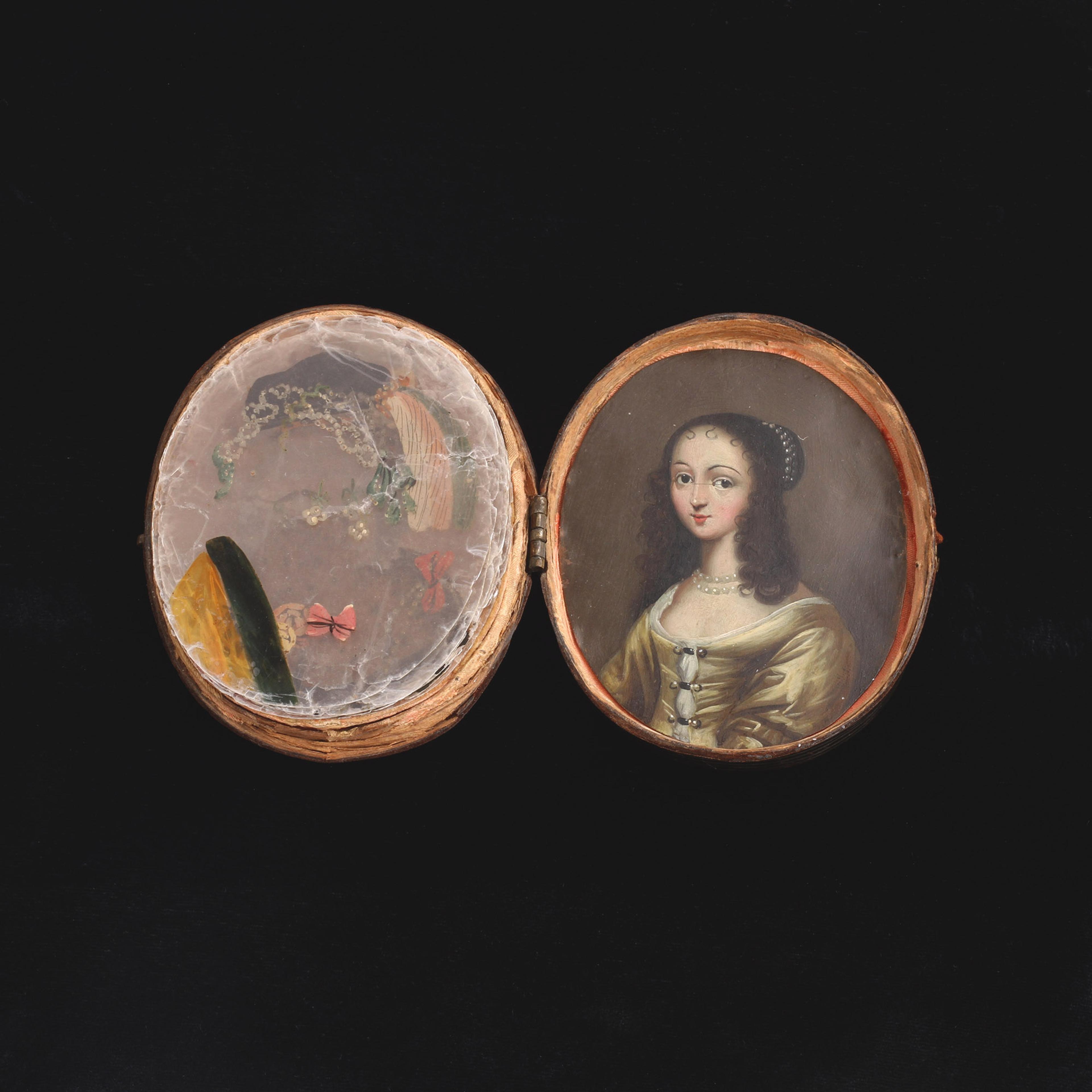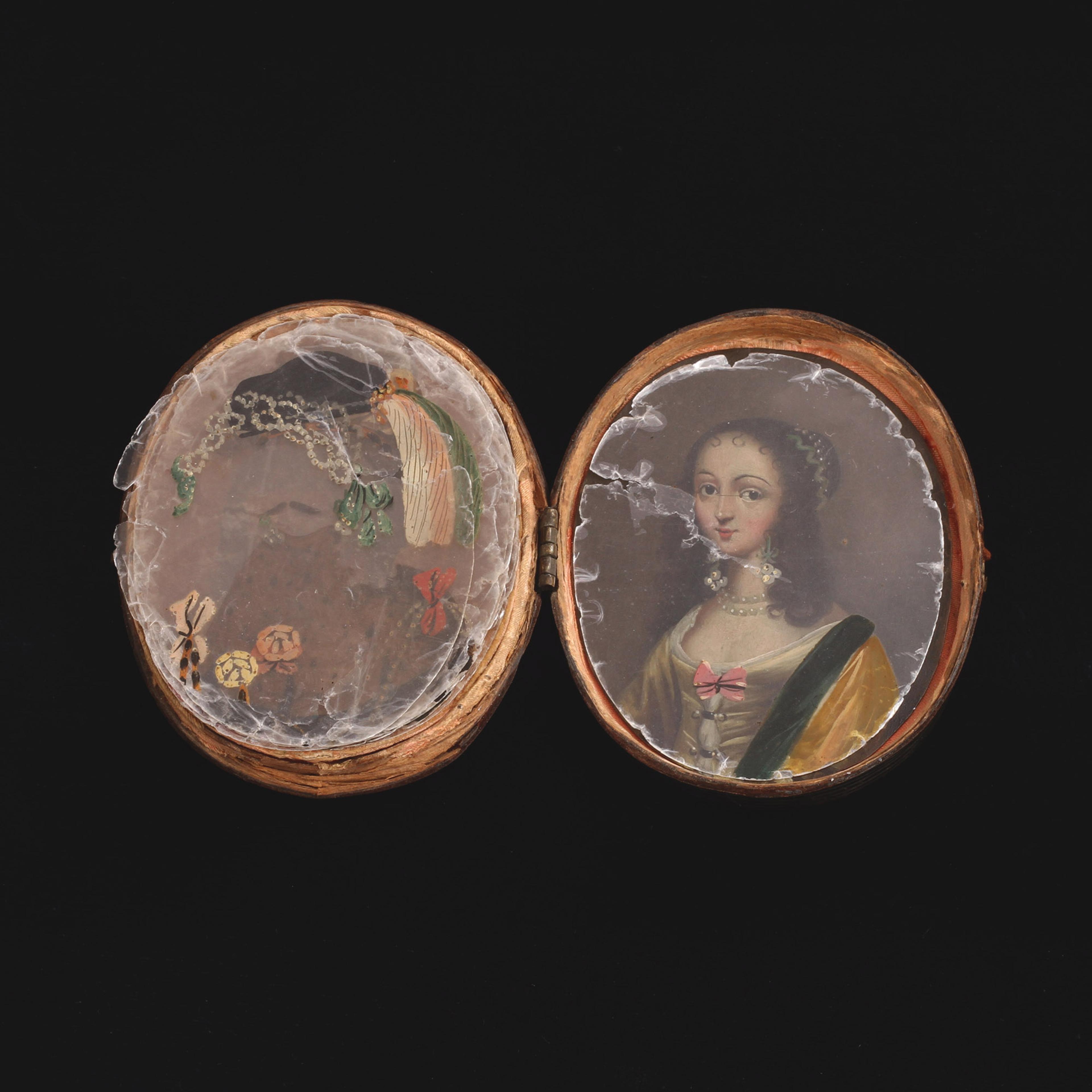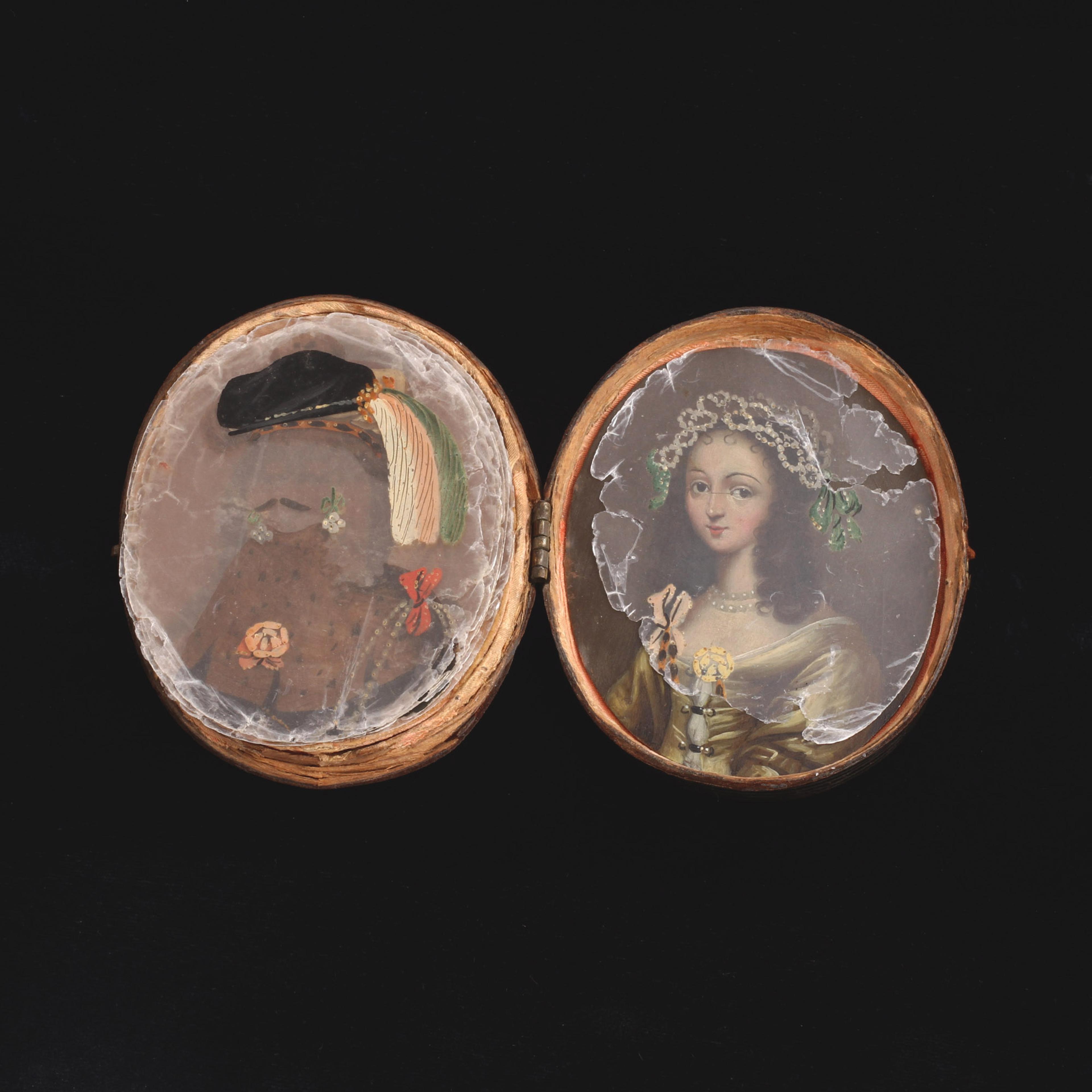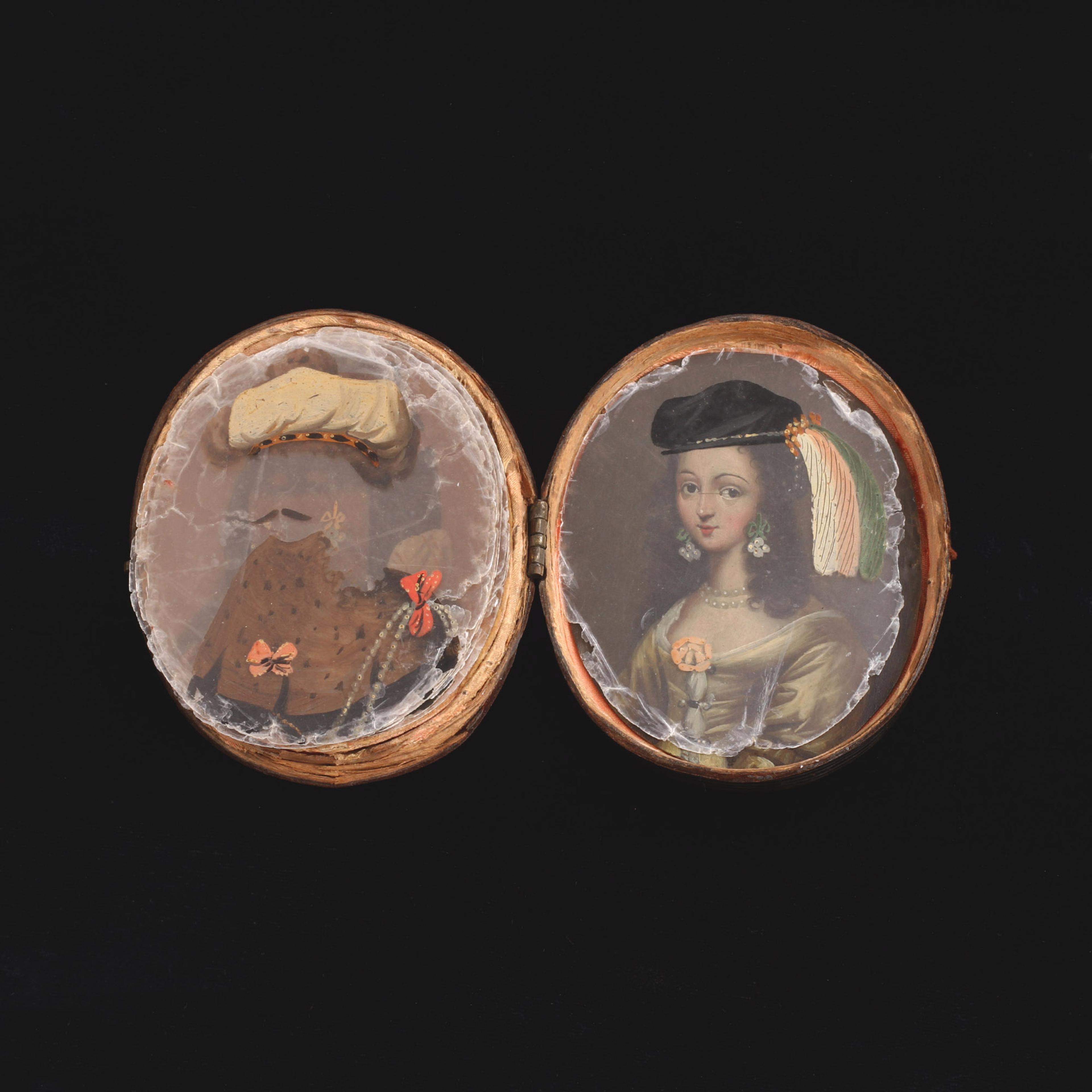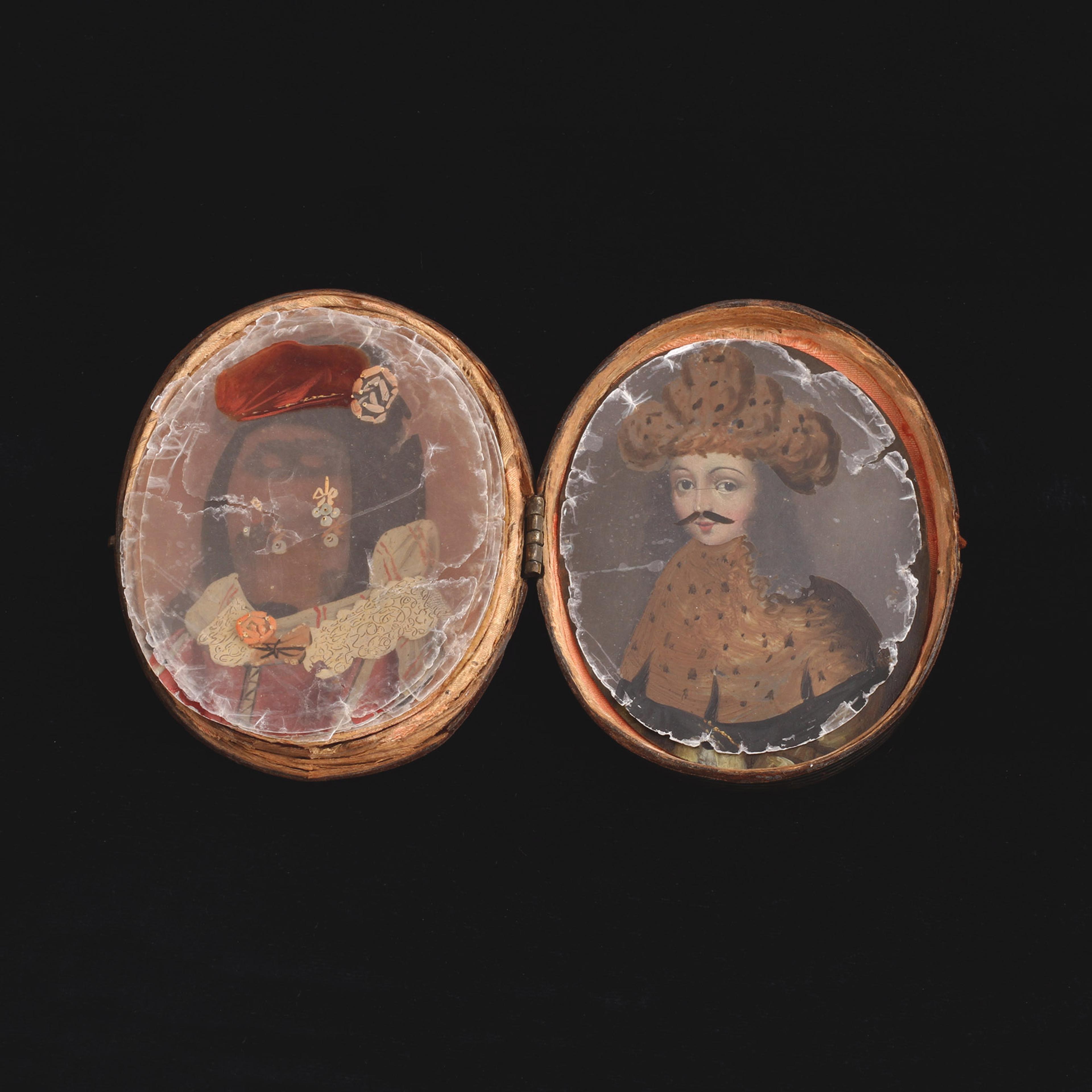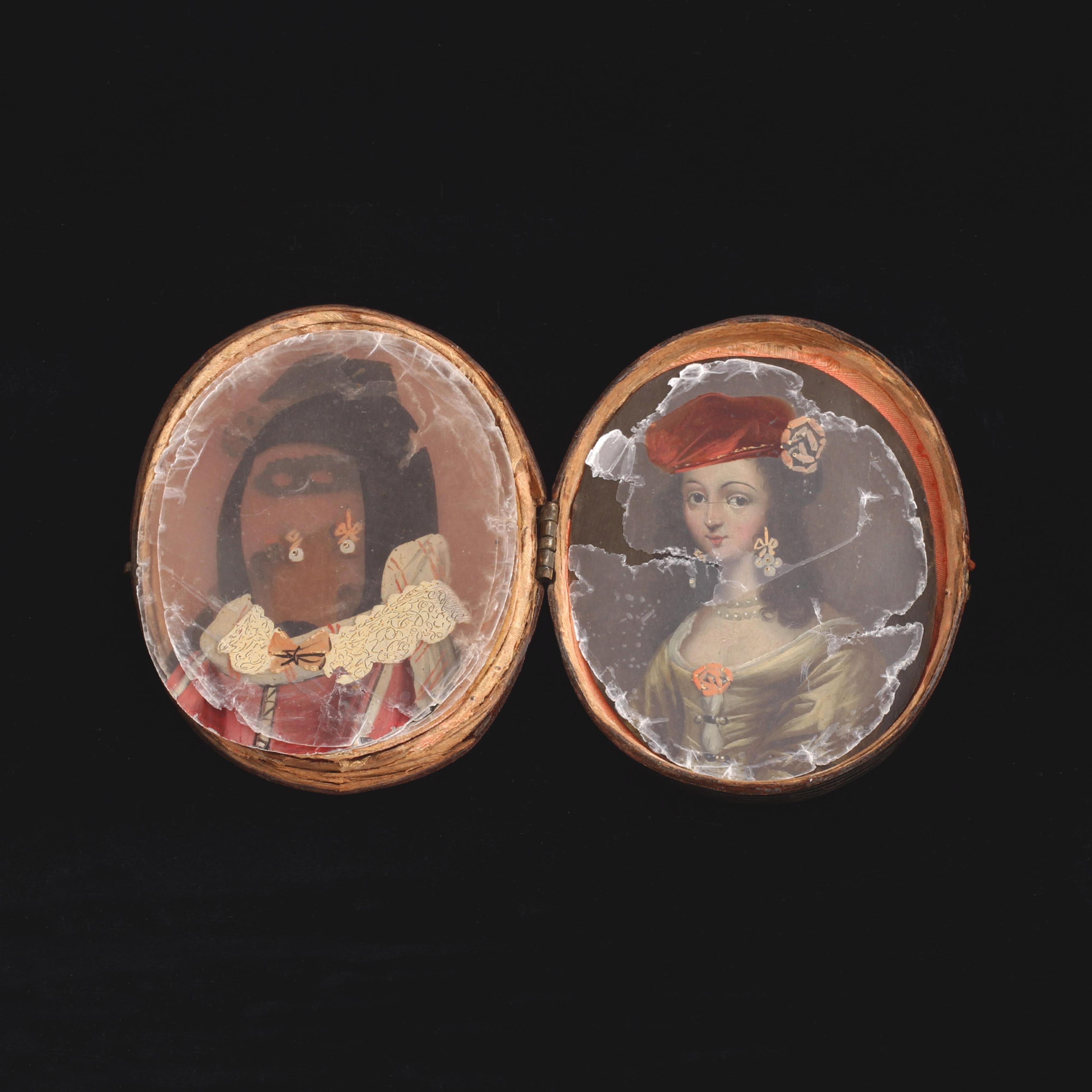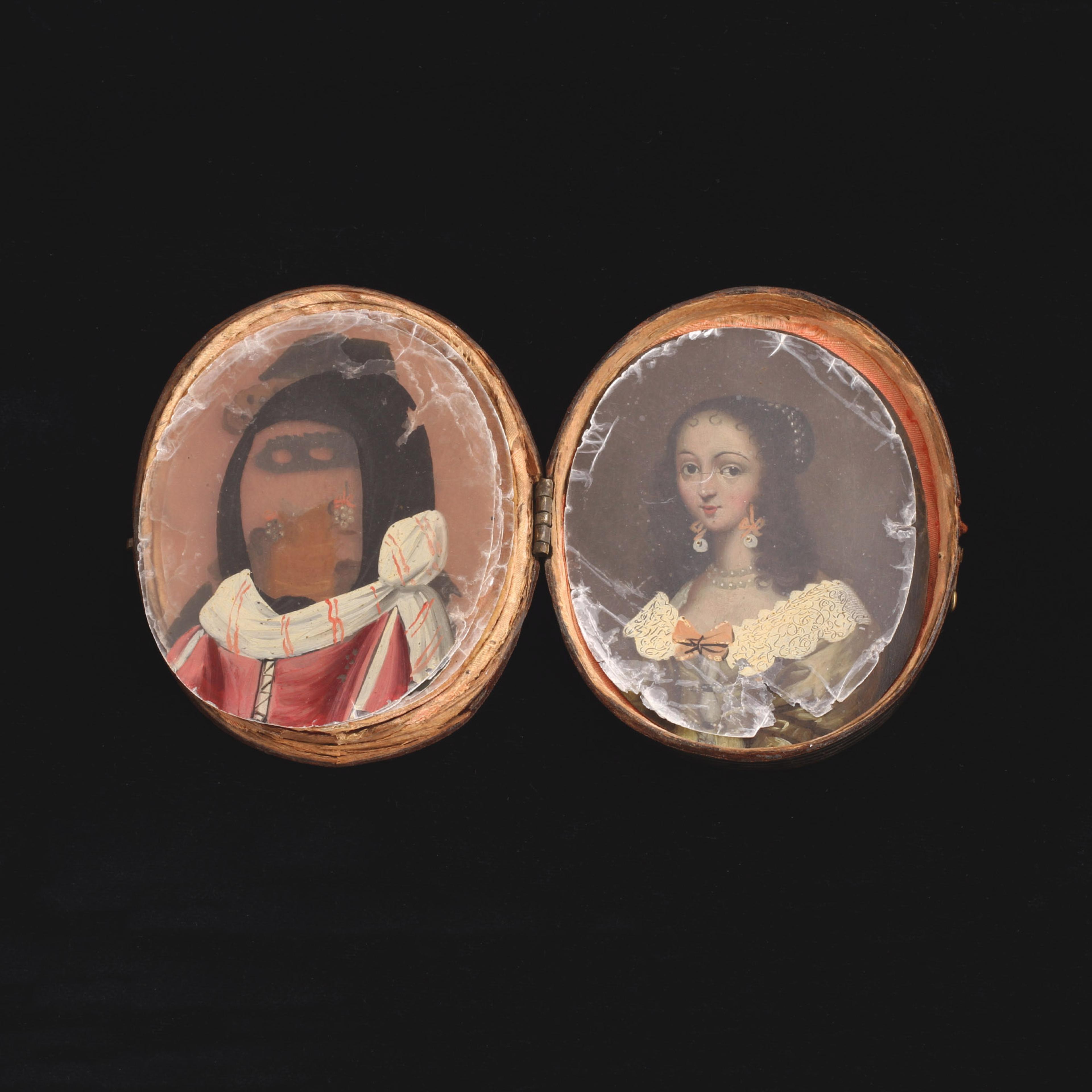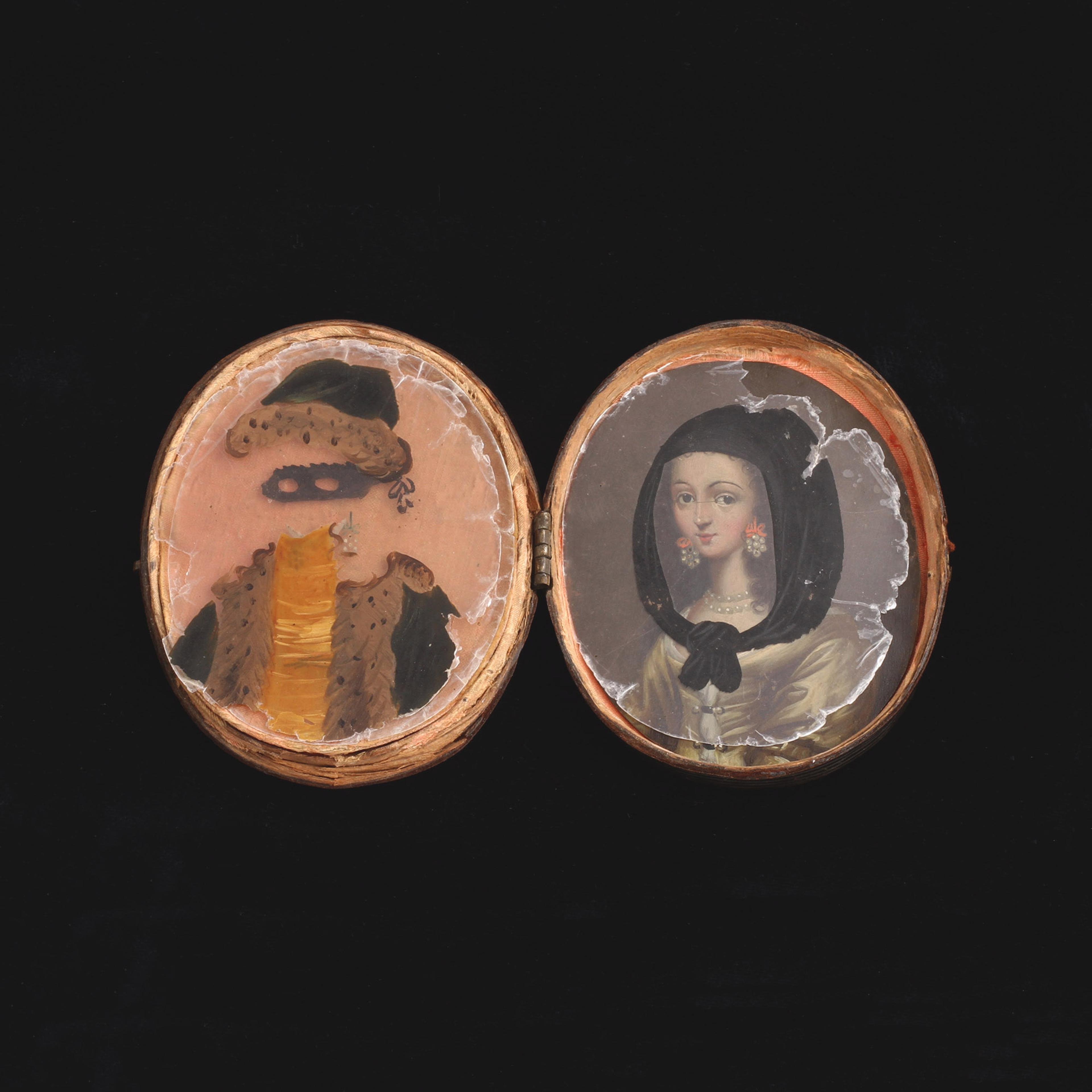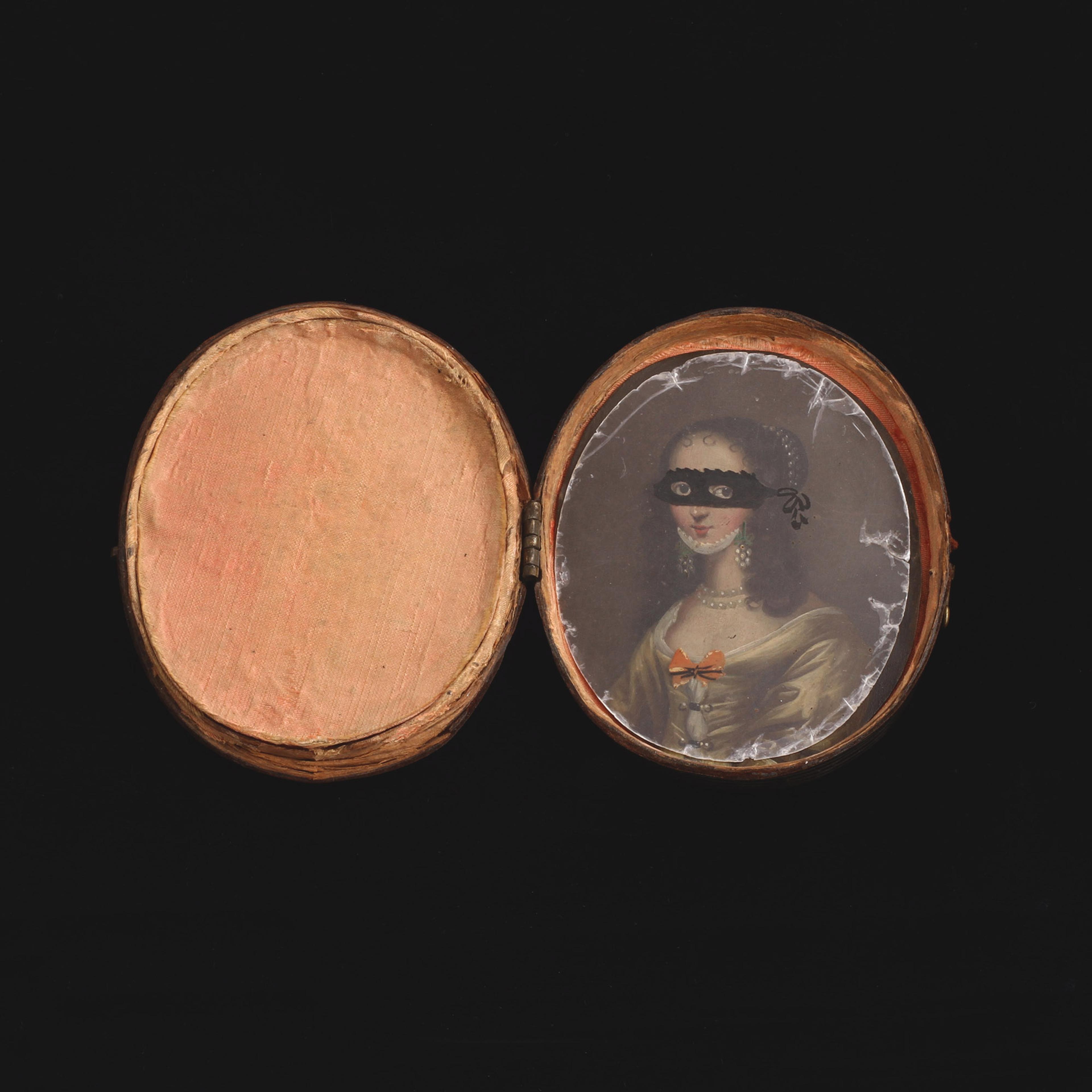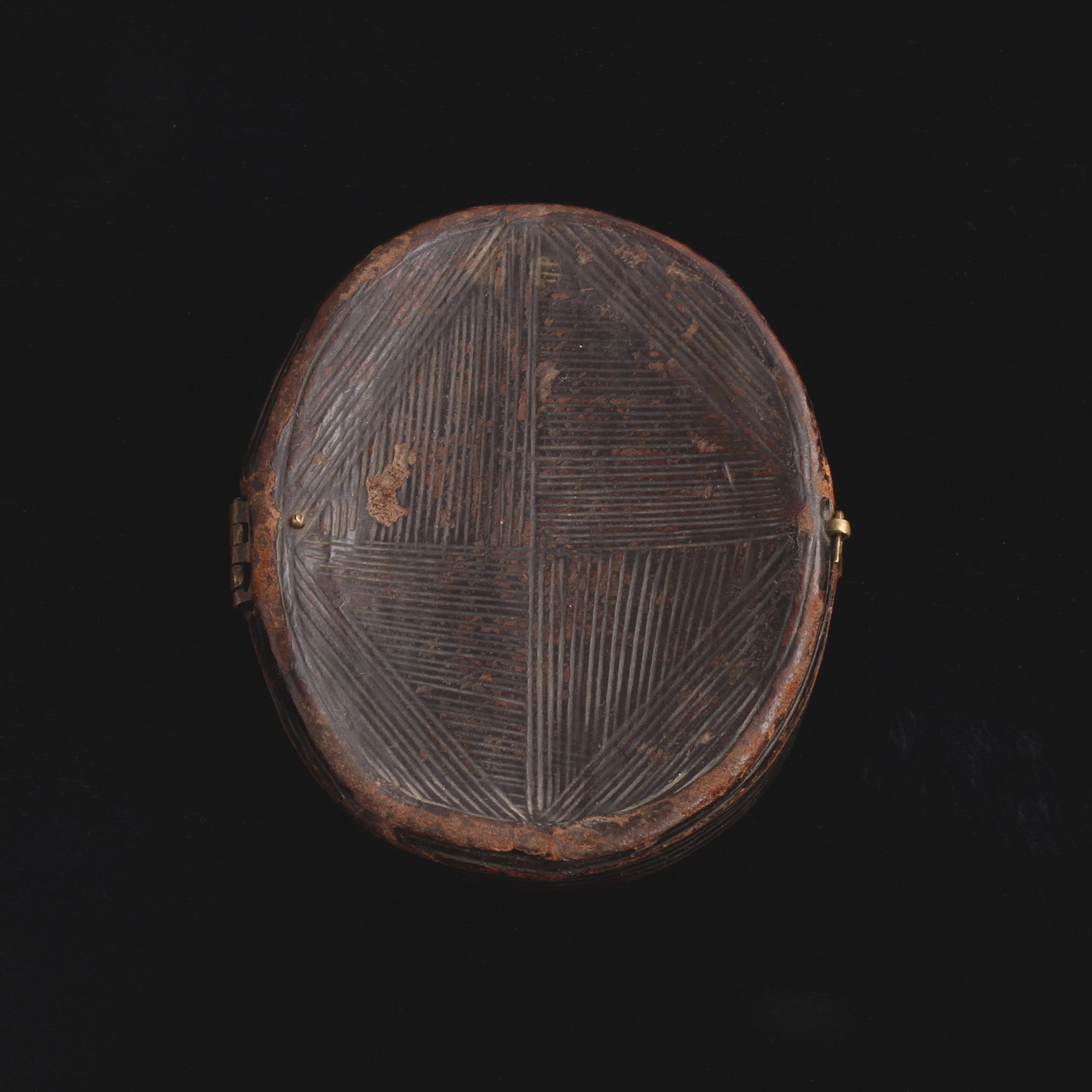These little portrait miniatures were a fun dress-up amusement for the aristocracy throughout Europe after 1650. Along with a miniature oil portrait on copper are a series of painted costume details on slivers of mica, which was known at the time as "talc". In our boxed set, there are 11, and they all nestle alongside the portrait within their original leather case. It is one of only 45 known sets in circulation. In France, in the mid-1700s, these early paper dolls were known as "metamorphoses". Some sets represented historical events or intrigues. The woman in the portrait is believed to be Henrietta Marie, Charles 1's wife (and mother to his successors, Charles II and James II) Charles 1 was beheaded in 1649, and wearing mourning jewelry with his likeness was a way to secretly show support for the monarchy. If our little dress-up set is, in fact, the unpopular Catholic queen, then the very act of owning this object was subversive or even dangerous in the late 1600s.
thedetails
- Materials
Leather case, oil painting on copper, 11 mica discs with painted details.
- Age
late 1600s or early 1700s
- Condition
Good; there is a scratch on the painting's face and we don't know if there were originally more mica discs.
- Size
approximately 2" tall
Need more photos?
Send us an email to request photos of this piece on a model.
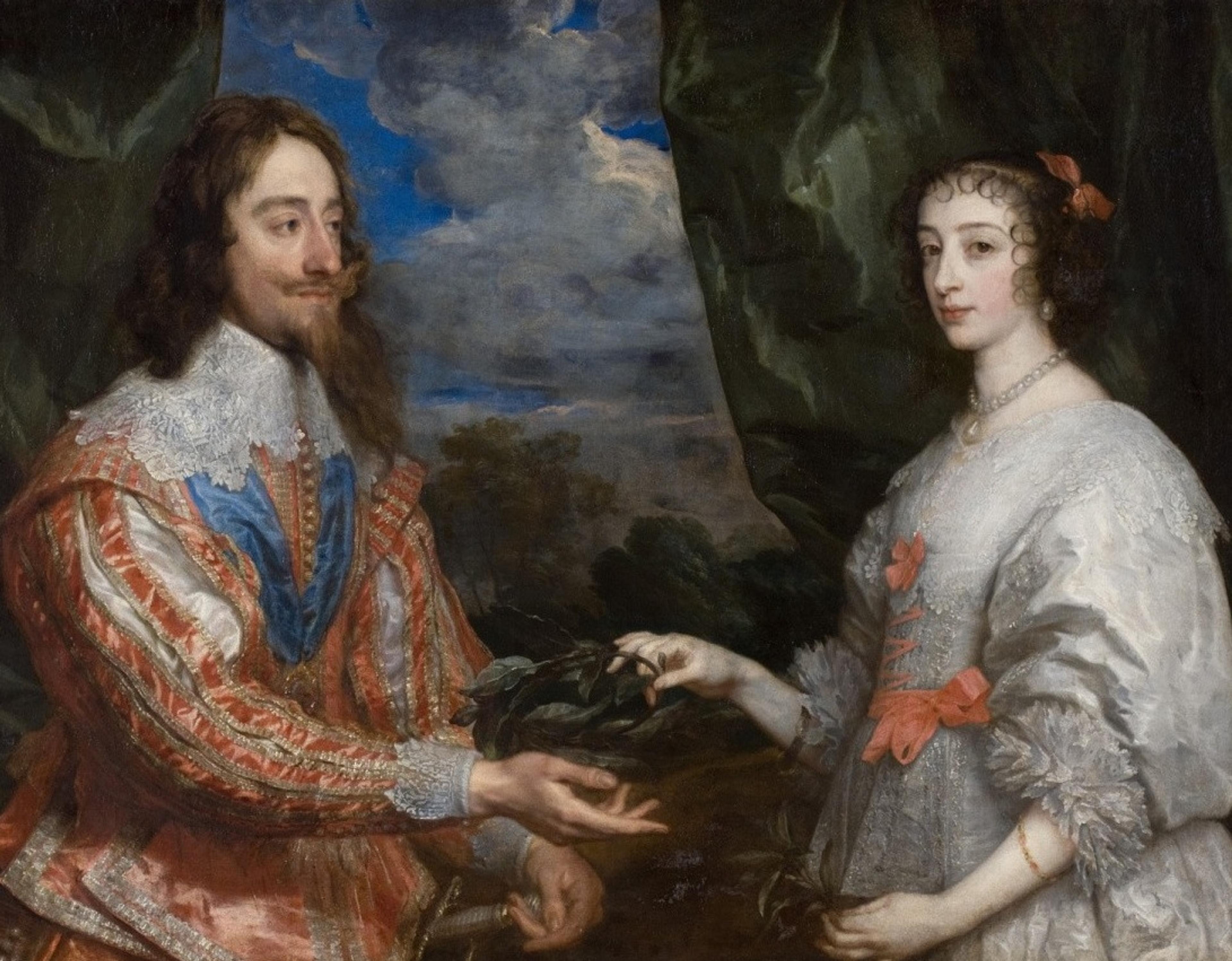
Aboutthe
StuartEra
1603 — 1714
A new era dawned when Queen Elizabeth — the last Tudor monarch — died without an heir. The monarchy was temporarily displaced by the Commonwealth of England from 1649 to 1660 by Oliver Cromwell, but was restored — aka "The Restoration" — as Charles II was invited to take the throne. His father, Charles I, had been beheaded in 1649, and most of the jewelry we see from this period was at least stylistically related to this controversial political event. During this time, discoveries and innovations transformed England and Scotland, which were conjoined after a long period of feuding. Coffee became a new trendy beverage, with 600 coffeehouses in London all catering to a different type of clientele. This imported novelty beverage was possible because of the UK's rapidly expanding worldwide trade network. Not yet interested in acquiring territories, the island nation focused instead on making a fortune exporting wool and importing goods like slaves, sugar, and tea. Everyone (except the enslaved people, of course) benefited from the new merchant class that arose, and in the process the Royal Navy became the most powerful in the world. The look of London changed, too — after the Great Fire of 1666, Christopher Wren was hired to rebuild the city's damaged churches, with his greatest accomplishment being St. Paul's Cathedral.

